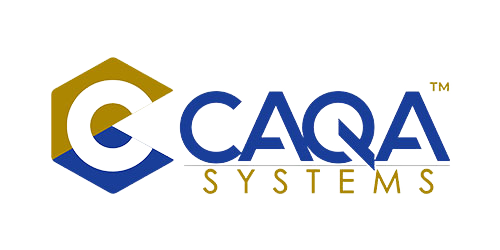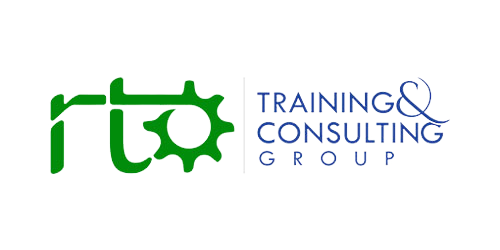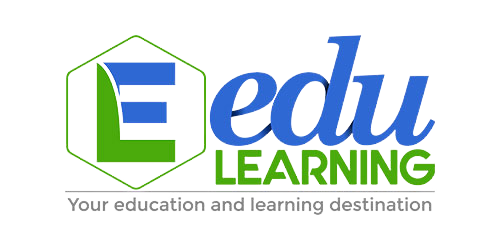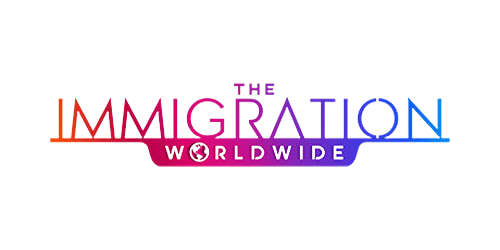In a sun-drenched classroom on Australia's Gold Coast, a diverse group of students huddles around a digital manufacturing station. A local apprentice troubleshoots a 3D printing issue while video conferencing with peers in Germany and Singapore. Nearby, hospitality trainees practice service protocols that seamlessly blend Australian warmth with Japanese precision and Italian flair. This isn't just vocational education, it's a launchpad for careers that will span continents.
Welcome to Australia's vocational education and training sector in 2025, where preparing students for international success isn't just an aspiration; it's an absolute necessity.
"The days when we could design courses assuming graduates would work exclusively within Australian contexts are long gone," explains a leading VET educator from Queensland. "Today's plumber might be applying their skills on an international mining project in Africa next year. Today's graphic designer could be collaborating with teams across five time zones by next month."
The statistics tell a compelling story. Australia welcomed over 750,000 international students in 2023, cementing its position among the world's top three destinations for international education alongside the United States and the United Kingdom. Within this vibrant educational ecosystem, VET students represent an increasingly significant proportion, bringing diverse perspectives into classrooms while contributing billions to the Australian economy.
But internationalisation runs far deeper than student recruitment statistics. It represents a fundamental shift in how vocational education prepares all learners, both domestic and international, for careers in a world where professional boundaries are increasingly defined by capability rather than geography.
From Local Training to Global Preparation
The transformation of Australia's workplace ecosystem represents one of the most profound social and economic shifts of the 21st century. The traditional paradigm of employment, characterised by lifelong careers within a single organisation, often within commuting distance of one's home, has given way to fluid, boundary-spanning professional trajectories.
Digital nomadism, once considered an exotic lifestyle choice, has evolved into a mainstream employment arrangement. Millions of professionals now leverage high-speed internet connections to perform knowledge work from coastal villages in Southeast Asia, mountain retreats in South America, or bustling European cafés.
For Australia's VET sector, this global transformation presents both remarkable opportunities and complex challenges. The opportunities lie in positioning Australia as a provider of world-class vocational training that prepares individuals for success on a global stage. The challenges emerge from traditional approaches focused exclusively on domestic labour market needs, which increasingly fall short in preparing learners for the nuanced realities of contemporary careers.
"We're not just teaching students to become electricians or accountants or chefs," notes an industry partnership manager from a leading Melbourne TAFE. "We're teaching them to become professionals who can apply those skills across different regulatory environments, collaborate with diverse teams, and adapt to constantly evolving industry practices that vary significantly across borders."
This shift requires moving beyond superficially adding international content to existing programs. It demands a deeper reimagining of vocational education as preparation for dynamic careers that may span multiple countries, industries, and cultural contexts throughout an individual's working life.
The Global Competency Imperative
What exactly makes a graduate "globally ready"? The answer extends far beyond possessing the latest technical skills.
In a recent survey, 70% of Australian employers reported that their teams regularly work with colleagues or clients from different cultural backgrounds, both domestically and internationally. This cultural diversity in the workplace makes cross-cultural communication and collaboration fundamental professional capabilities rather than specialised skills for select roles.
"Technical excellence without cultural intelligence creates graduates who struggle in today's interconnected workplaces," observes a diversity specialist who consults with major employers across Australia's eastern seaboard. "Someone might be brilliant at coding or engineering or culinary arts, but if they can't navigate cultural differences in communication styles, decision-making approaches, or workplace hierarchies, their effectiveness is severely limited."
Progressive VET providers are responding by integrating cross-cultural elements directly into technical training. Hospitality programs incorporate scenarios involving guests from different cultural backgrounds, engineering courses include collaborative projects with international partner institutions, and healthcare training addresses cultural variations in attitudes toward health, illness, and treatment.
Language capabilities represent another critical dimension of global readiness. While English functions as a common business language in many sectors, proficiency in additional languages creates significant professional advantages. According to recent Australian industry data, employees fluent in a second language can earn up to 10-15% more than their monolingual peers in globally connected industries.
For Australian VET learners, developing capabilities in languages of major trading partners and regional neighbours, such as Mandarin, Japanese, Indonesian, Punjabi, or Hindi, can provide particular competitive advantages in export-oriented industries.
"Even partial language capabilities combined with cultural awareness can significantly enhance professional effectiveness," explains a language education specialist. "It's not about becoming completely fluent in multiple languages. It's about developing enough familiarity to build trust, show respect, and navigate basic interactions in another cultural context."
Beyond cultural and linguistic capabilities, global industry awareness has become essential. Over 60% of Australian VET graduates in technical fields report working with international standards or regulations within their first three years of employment. This highlights the importance of understanding how local practices relate to international norms and how to adapt skills across different regulatory environments.
"Standards that seemed purely theoretical during training become daily considerations when working with international clients or in global supply chains," notes a compliance officer who oversees international certification for a major Australian manufacturing company. "Whether it's ISO standards, international building codes, or global financial regulations, these frameworks increasingly shape how work gets done across borders."
Pedagogical Innovation: How VET Is Going Global
Australia's VET institutions are implementing several innovative approaches to develop these global capabilities alongside vocational expertise.
Firsthand international experiences offer particularly powerful learning opportunities. Participation in international VET placements has doubled in the past five years, with over 5,000 Australian VET students undertaking overseas study or work experience annually. These immersive experiences range from comprehensive study abroad programs and international internships to shorter industry visits that provide valuable exposure to different cultural contexts and work practices.
"My three-month placement at a hotel in Switzerland completely transformed my understanding of hospitality," shares a recent graduate from a tourism and hospitality program in Adelaide. "The precision in their operations, the multicultural guest expectations, the different approach to service, these weren't things I could have truly understood without experiencing them firsthand."
While international placements offer deep learning, VET providers are also developing innovative alternatives that provide global exposure despite constraints of time, cost, or personal circumstances. Since 2020, the number of Australian VET students participating in virtual international collaborations has increased by more than 300%, driven by advances in digital learning technology and pandemic-related travel restrictions.
"Our construction students completed a joint project with counterparts in Canada and New Zealand, comparing building techniques adapted to different climate conditions," describes a construction teacher from regional New South Wales. "The learning wasn't just technical,it was about communicating across time zones, reconciling different technical vocabularies, and presenting solutions that made sense across different regulatory frameworks."
The increasing diversity within Australian VET institutions provides additional opportunities to develop global competencies through everyday learning interactions. International students make up nearly 30% of enrollments in some Australian VET programs, turning classrooms into microcosms of the global workforce.
"We intentionally create mixed teams for project work," explains a business studies coordinator from Sydney. "A team might include students from Vietnam, Brazil, regional Australia, and western Sydney. Learning to navigate those different perspectives, communication styles, and work approaches within a classroom prepares students for exactly the kind of diverse teams they'll encounter in the workplace."
Digital technologies are further expanding global learning opportunities. More than 200 Australian VET providers now use virtual reality or augmented reality to simulate international work environments, allowing students to practice cross-cultural scenarios without leaving the classroom. These technologies are particularly valuable for programs in regional or remote areas where direct international exposure may be limited.
"Our nursing students can practice patient interactions with individuals from different cultural backgrounds who have varied expectations around healthcare, physical contact, family involvement, and communication with medical authorities," explains a health training coordinator from Tasmania. "VR lets them make mistakes and learn in a safe environment before encountering these scenarios in real clinical settings."
Industry Partnerships Driving Global Capability Development
Effective global preparation in VET requires strong partnerships with internationally connected industry stakeholders who understand workforce needs in global contexts.
Companies operating internationally or participating in global supply chains offer particularly valuable partnerships for VET institutions. Export-oriented industries like advanced manufacturing, hospitality, and healthcare, major employers of VET graduates, are among Australia's top export earners, contributing over $100 billion annually to the economy.
"Our success in international markets depends on having employees who can adapt our Australian approaches to different business environments," states a business development manager for a food production company that exports to 30 countries. "We need graduates who understand food safety standards across multiple jurisdictions, who can communicate effectively with diverse stakeholders, and who recognise how consumer preferences vary across markets."
International industry associations, professional bodies, and sector networks provide valuable connections to global standards, emerging trends, and best practices. Engagement with these organisations helps VET institutions remain current with international developments while providing pathways for recognition of qualifications across borders.
Graduates working internationally represent another valuable resource for enhancing global dimensions of VET programs. Australian VET alumni are employed in over 120 countries, providing a powerful network for current students to access global opportunities and mentorship.
"Our alumni who are working overseas serve as guest speakers, mentors, and even hosts for international placements," shares an alumni relations coordinator from a Brisbane-based provider. "They provide authentic insights into how Australian qualifications translate to different markets and what additional skills graduates need to succeed internationally."
Overcoming Implementation Challenges
While the imperative for global capability development is clear, implementing effective approaches involves navigating several significant challenges.
VET providers face the challenge of incorporating global dimensions while still meeting local regulatory requirements, industry needs, and training package specifications that may not explicitly address international contexts. Finding space within already packed curricula for additional global elements represents a significant constraint.
"The most successful approaches integrate global elements within existing technical components rather than adding separate international modules," advises a curriculum developer with extensive experience in the sector. "It's about helping students understand that cross-cultural capabilities and international awareness are inherent aspects of contemporary professional practice, not optional extras."
Ensuring equitable access to global learning opportunities regardless of personal circumstances represents another challenge. Traditional international mobility experiences often favour those with financial resources, family flexibility, and confidence to travel, potentially excluding disadvantaged learners who might benefit most from expanded career horizons.
Targeted scholarships and virtual programs have increased participation in international experiences among disadvantaged VET learners by 40% in the past three years. These equity-focused approaches include developing tiered international opportunities ranging from comprehensive overseas placements to virtual exchanges and domestic multicultural experiences, ensuring all learners can access appropriate global learning.
"We've created a progression pathway where students might start with virtual exchanges, move to short domestic experiences with international dimensions, and eventually participate in overseas placements," describes an international programs coordinator from Perth. "This scaffolded approach builds confidence and capabilities while accommodating different personal circumstances."
Many VET institutions also face significant capacity challenges in implementing global initiatives, including limited staff expertise in international education and organisational cultures focused primarily on local industry relationships. Building the required capabilities requires strategic investment and institutional commitment beyond individual champion-led projects.
"Professional development that enhances staff global competencies and comfort with international engagement is essential," notes a VET leadership consultant. "When educators have meaningful international experiences themselves, they naturally incorporate global perspectives into their teaching and better understand the value of preparing students for international contexts."
Measuring Global Readiness
Developing effective approaches to evaluating global learning outcomes represents a critical challenge for VET internationalisation. Traditional assessment focused on technical skills may not adequately capture the development of cross-cultural capabilities, global perspectives, and adaptability across contexts.
Digital badges and micro-credentials for global competencies are now offered by over half of Australia's leading VET institutions, making it easier for employers to identify graduates with international capabilities. These flexible recognition mechanisms can acknowledge various types of international learning, from language proficiency and cross-cultural communication to experience with global standards or participation in international projects.
"Employers need ways to quickly identify candidates with specific global capabilities," explains an employment services provider who works with multinational companies. "When a graduate can demonstrate not just their technical qualification but also verified experience collaborating across cultures or applying skills in different regulatory environments, it significantly enhances their employability for roles with international dimensions."
Regular feedback from key stakeholders provides essential insights for refining global capability development approaches. Structured feedback mechanisms, including graduate outcome surveys with specific global capability indicators, employer consultations focused on international preparation, and alumni panels sharing global work experiences, provide valuable data for continuous improvement.
The Future Is Global
As Australia navigates an increasingly complex global landscape, the VET sector stands at a crucial crossroads. The providers who thrive will be those who recognise that global capability development isn't a luxury add-on but a core component of quality vocational education that prepares graduates for the actual work environments they'll encounter.
The most successful approaches recognise that global capability development is integral to contemporary professional practice across virtually all industries. By embedding international perspectives, cross-cultural skills, and adaptable problem-solving throughout technical education, VET providers prepare graduates who can apply their specialised capabilities effectively across diverse contexts throughout careers that will likely span different countries, cultures, and working environments.
This preparation extends beyond enhancing individual employability to contribute to broader social and economic objectives. Graduates with well-developed global capabilities support Australian industry participation in international markets, facilitate knowledge transfer from global best practices, enhance workplace diversity and inclusion, and contribute to intercultural understanding within increasingly multicultural communities.
"In the end, our fundamental purpose isn't just preparing students for their first job," reflects a veteran VET educator with three decades of experience across multiple institutions. "It's preparing them for sustained career success in a world where borders increasingly define diversity rather than limitations."
As that diverse group of students on the Gold Coast continues their collaborative project, connecting Australian expertise with global perspectives, they aren't just learning technical skills. They're developing the global mindset and cross-cultural capabilities that will allow them to thrive in careers that might take them anywhere in the world.
In tomorrow's labour market, vocational excellence will be inseparable from global capability. Australia's VET sector is rising to the challenge of preparing graduates not just for local jobs, but for borderless careers in an interconnected world.


































